Phase 3: Policy Framework (January – December 2017)
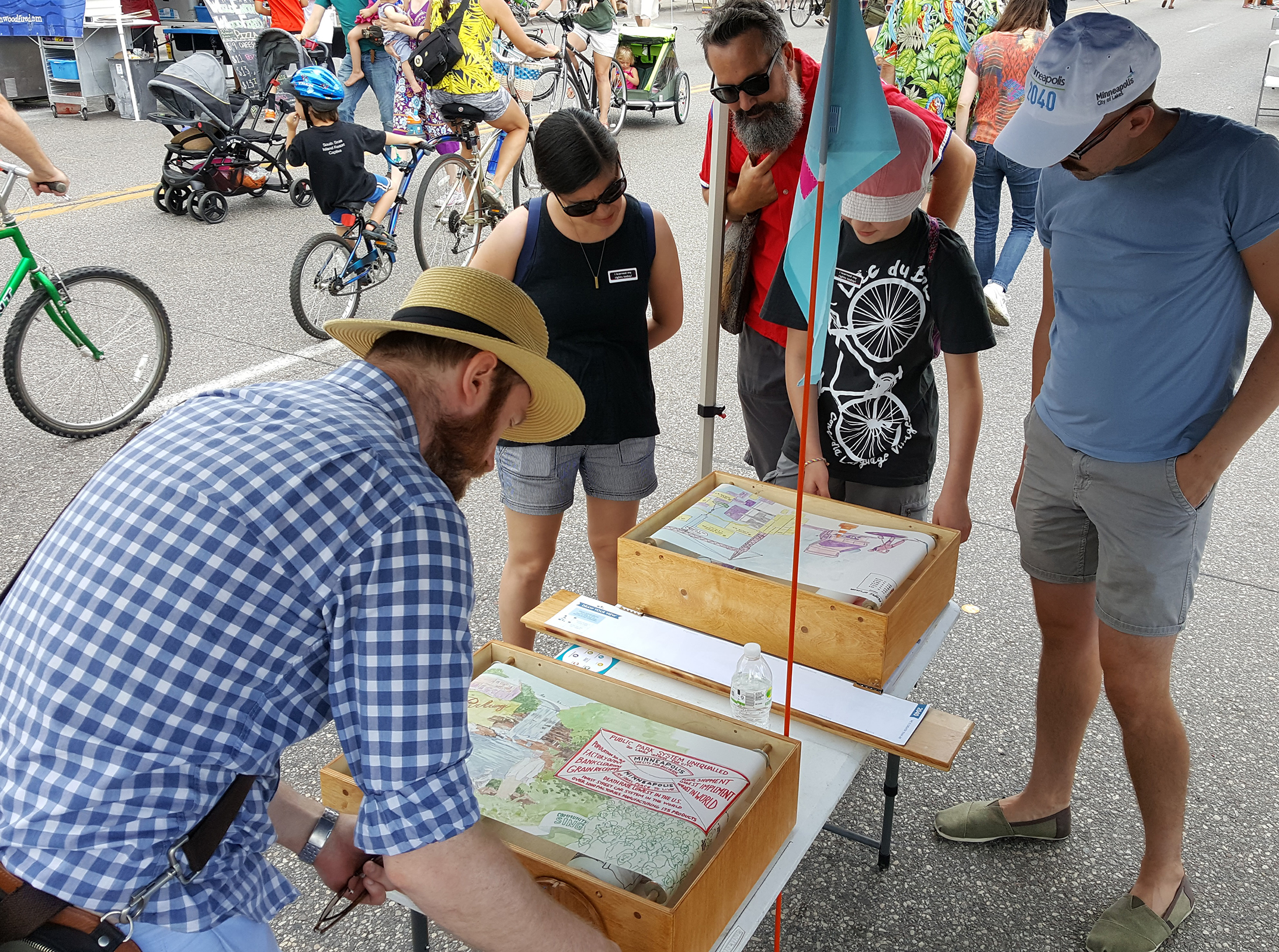
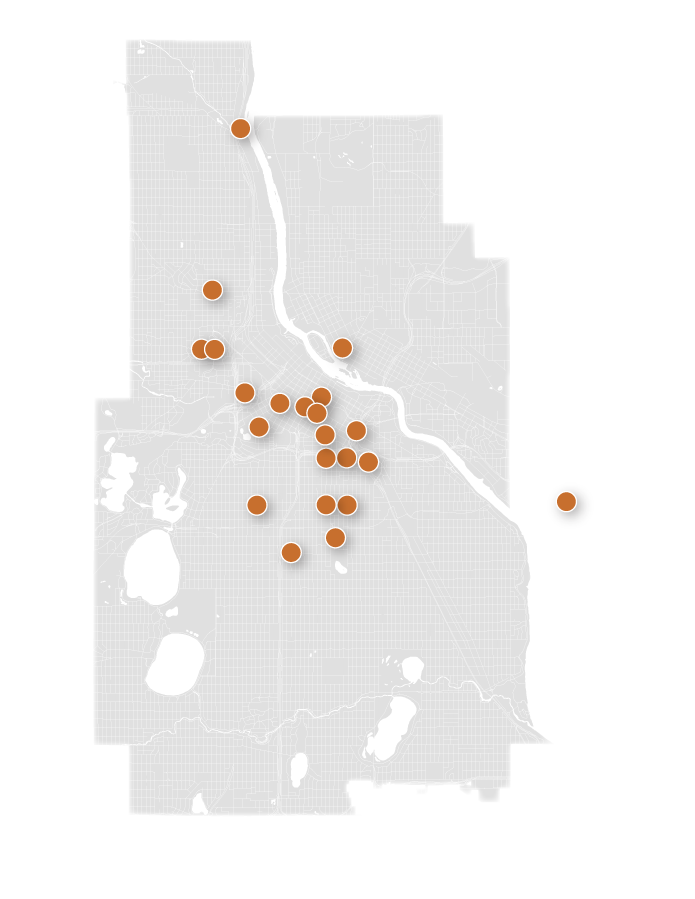
Phase 3: Policy Framework began with the development of the overarching goals for Minneapolis 2040. City staff reviewed engagement feedback from prior phases, and developed overarching goals to state the intent of the plan in order to provide guidance for staff in developing draft comprehensive plan policies. A key theme staff heard from engagement throughout engagement was Equity. Equity, a key theme and comprehensive plan value, was heard on various topics such as housing, jobs, transportation, the environment, and health. As a result of engagement, City staff developed fourteen goals for Minneapolis 2040 that were adopted by the Minneapolis City Council in April 2017.
Phase 3 occurred throughout 2017 and was divided into two rounds of engagement in order to increase opportunities for engagement and develop a framework for the comprehensive plan. Phase 3A lasted from the spring through the fall of 2017 with the objective to gather feedback on strategies related to the goals through the lens of racial equity.
The City returned to the community in the winter of 2017 known as Phase 3B with the following objectives:
- Report back on what was heard during Phase 3A
- Reaffirm the feedback by providing supporting information and context
- Seek feedback on draft policy directions, and how to apply them geographically to expand opportunities for housing, jobs and improve connectivity.
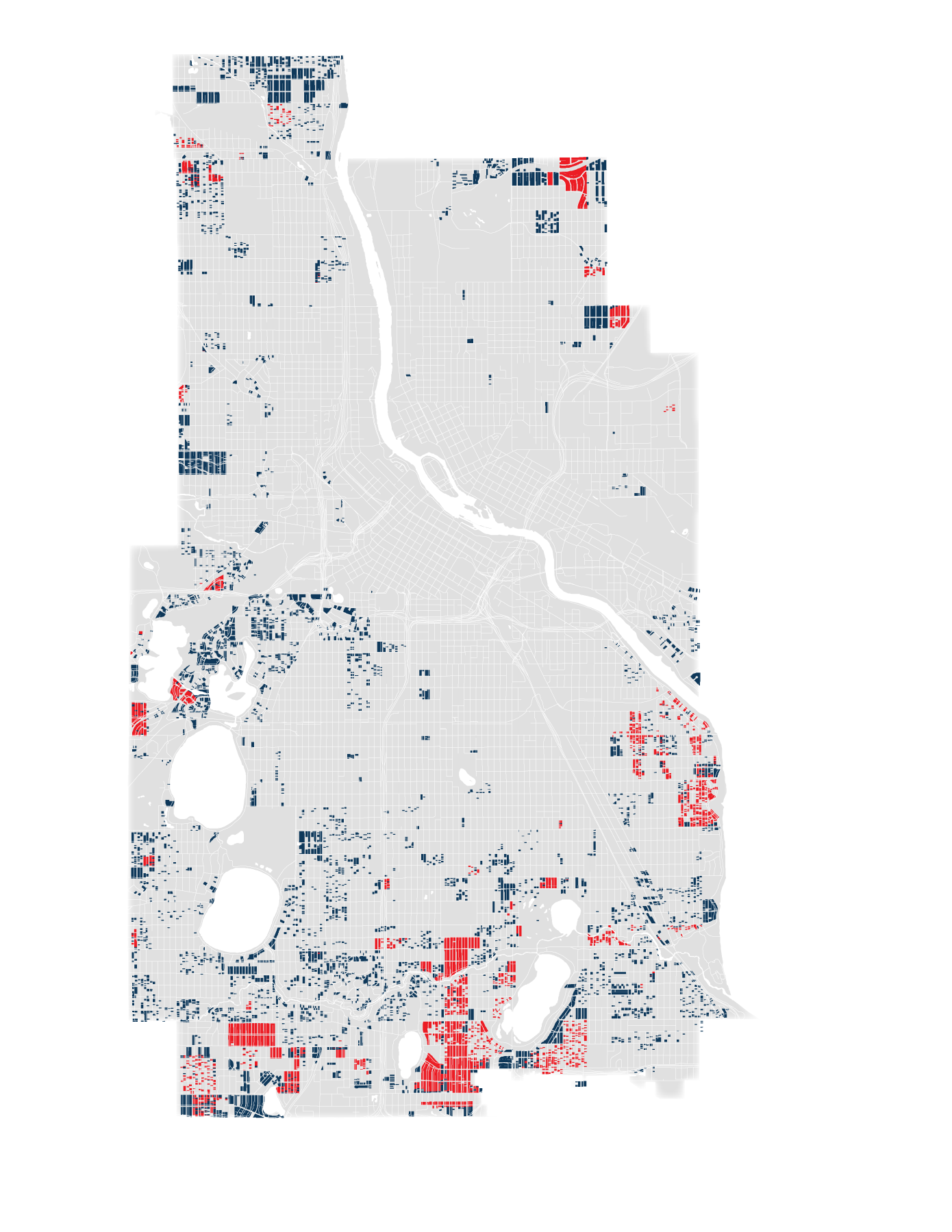
One of the driving influences of today’s racial disparities, in such topics as housing, is the systematic inequities that are deeply rooted in discriminatory policies and practices. The top goal for Minneapolis 2040 is: “In 2040, Minneapolis will have significantly reduced economic, housing, safety, and health disparities among people of color and indigenous peoples compared with white people.” Phase 3A engagement activities were designed to gather input about strategies to achieve the Minneapolis 2040 goals by framing the discussion about the historical context of past planning and housing-related decisions and their negative effects on communities through the lens of racial equity. In the map to the right, red denotes where racial covenants have been found, while blue indicates no racial covenants.
Areas of the city that lack housing choice today were built that way intentionally due to zoning regulations and federal housing policies that worked together to determine who could live where, and in what type of housing through what is called ‘redlining’. One of the key projects that informed content for Phase 3A was Mapping Prejudice, a project working to identify and map racially restrictive covenants, and racially-restrictive deeds, from the 20th century that prevented people who were not white from buying or occupying property within Minneapolis. This project was undertaken by Augsburg University and the Center for Urban and Regional Affairs (CURA) at the University of Minnesota.
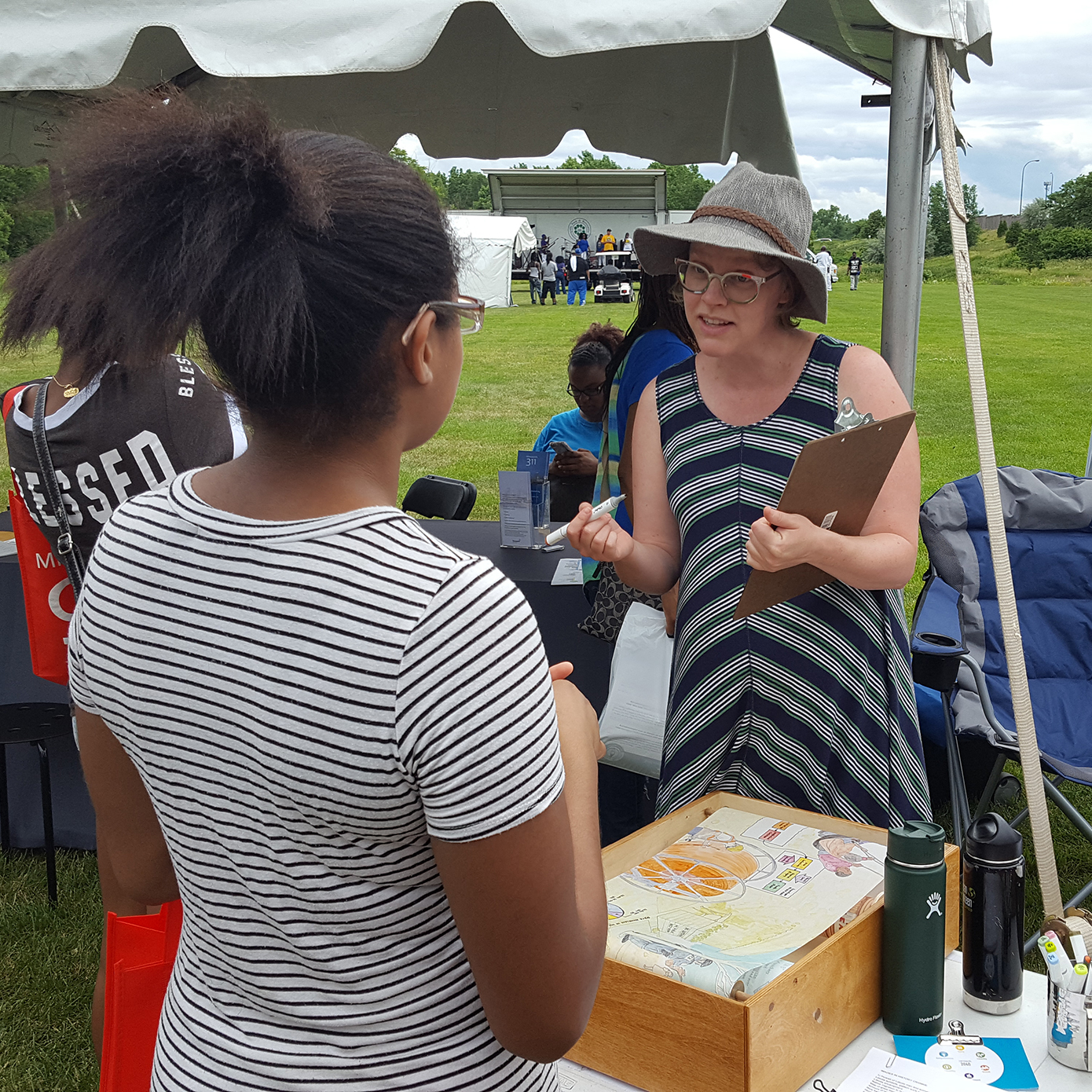
An integral piece of Phase 3A engagement was also the unveiling of a new mobile engagement tool called Imagining Equity. A mobile engagement tool is a highly portable and durable tool that can be used for engagement activities at street and cultural festivals. Local artists, Molly Van Avery and Mike Hoyt collaborated with staff to design a tool to tell the story about the historic context of inequities through the use of scrolls depicting the history and present day conditions called crankies. Participants interacted with the tool, and created their own crankies to share their vision for addressing racial disparities.
Phase 3B culminated with an engagement push throughout the winter of 2017 with online engagement activities and a series of open houses.
Engagement Activities
|
Community Connections Conference Lao Community Dialogue (LACM) Hmong Community Dialogue (HAMAA) Homelessness Community Dialogue Minneapolis Advisory Committee on Aging Youth Congress Minneapolis Advisory Committee on People Elliot Park Earth Fest |
Latino Community Dialogue Metropolitan Urban Indian Directors (MUID) MayDay Festival MUID Housing Subcommittee Juneteenth Somali Independence Day Festival African American Leadership Forum (AALF) Open Streets – Lake + Minnehaha |
Open Streets – Northeast Kulture Klub Collaborative Emerge MN Open Streets – West Broadway Central Neighborhood Fair Tweet with a Planner Digital Workshop Phase 3A Meeting-in-a-Box (Host Packet and Participant Packet) |
Engagement Questions – Phase 3A
The focus on much of engagement was on housing opportunities and access. Participants were asked to share their ideas on strategies to create housing opportunities and solutions that will enable those investments to occur. Another set of questions were created for the Imagining Equity - Mobile Engagement Tool, specifically for interactions at street and cultural festivals based upon the content created for the crankies.
- Housing
- How can the comprehensive plan increase access and opportunities for housing?
- Imagining Equity
- The year is 2040. Minneapolis has eliminated race-based disparities. What is it like in 2040?
- Draw Minneapolis in 2040, a city that is healing and reconciling forward. What does it look like? How do we get there?
Methods – Phase 3A
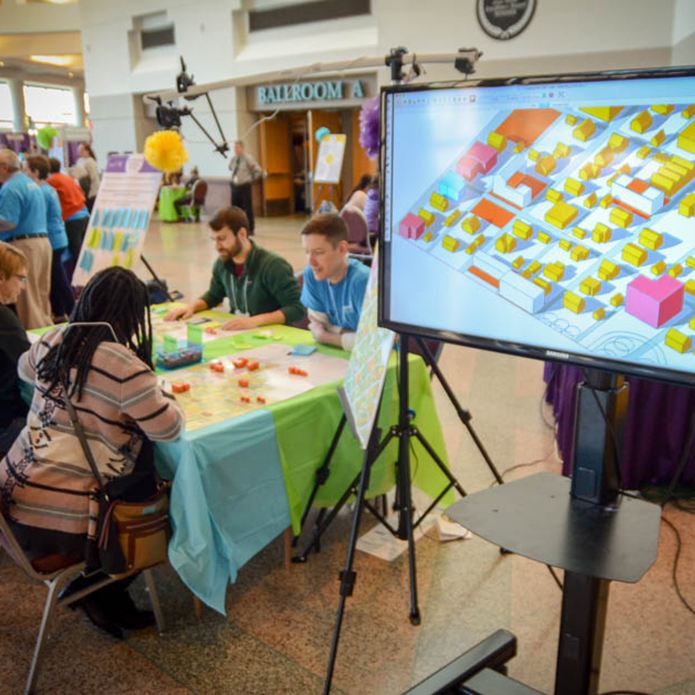
For the second year in a row, Minneapolis 2040 played a prominent role at the Community Connections Conference. It was scheduled as part of the kickoff to a month-long engagement push that lasted through April. Minneapolis 2040 played a role as an exhibitor with artist-designed activities, and hosted two breakout sessions: one on gentrification, and another on racially-restrictive covenants in Minneapolis.
Participants engaged in many activities related to the exhibit such as a facilitated discussion called “Planning for Equity” in which staff provided a historical context of transportation and housing policies and their impacts on equity and growth in Minneapolis. In a game called “Envisioning Housing for All”, participants redesign a neighborhood in order to provide housing opportunities. Participants arranged new buildings on a large poster board in relation to streets, parks, among other amenities, and scored points based on where blocks were placed. Afterwards, artists used the participants’ layouts to create 3-D models to share for further discussion.
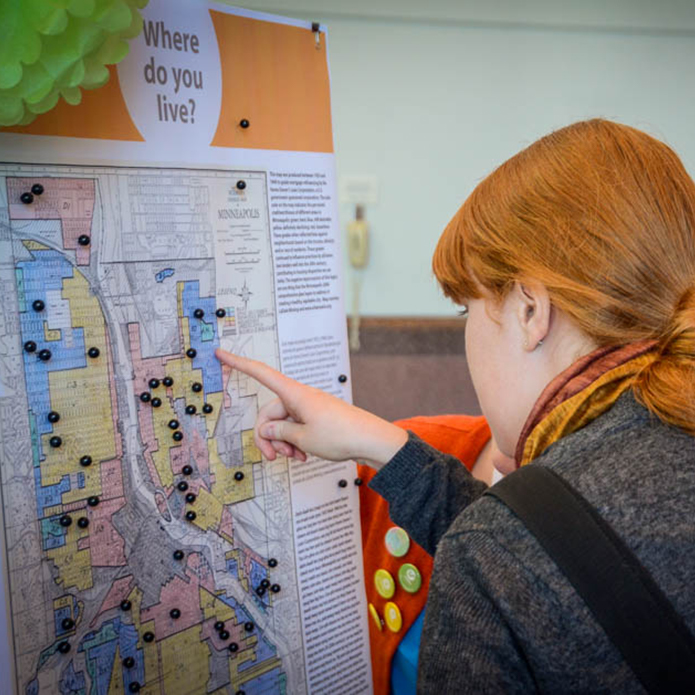
Staff utilized archival maps and resources to raise awareness about these historical planning practices and policies in order to seek feedback to address the issues of the lack of housing diversity, and how to increase housing choice to live to in any neighborhood in the city. Participants were encouraged to think about how to help reverse these disparities using a planning toolkit of regulations and programs. Maps and resources that were made available include:
- Redlining – Guidelines on mortgage lending, originally created by the Home Owners Loan Corporation (HOLC) in the 1930s, which influence private and public leaders in the awarding of mortgages.
- Racial Covenants – Where restrictions were racial restrictions were imposed on properties.
- Poverty and Race – Areas of concentrated poverty with at least 50% people of color

A third round of Community Dialogues was hosted in which redlining and racially restrictive covenants maps were key materials to the discussion about strategies. Staff returned to communities with department leaders and representatives from various Topical Research Teams to engage with community members and seek strategies to reverse these disparities. Much of the discussion focused on strategies that allowed equitable opportunities, and the prioritization of resources that invest in growth that benefits communities that already live in the community.
Imagining Equity: Minneapolis 2040 Mobile Engagement Tool
Over the summer, City staff unveiled a new mobile engagement tool called Imagining Equity. A mobile engagement tool is a highly portable and durable tool that can be used for engagement activities at street and cultural festivals. Local artists, Molly Van Avery and Mike Hoyt, collaborated with staff to design a tool to tell the story about the historic context of racial inequities in Minneapolis, and gather community feedback on how to address these disparities.
Videographer: Xiaolu Wang
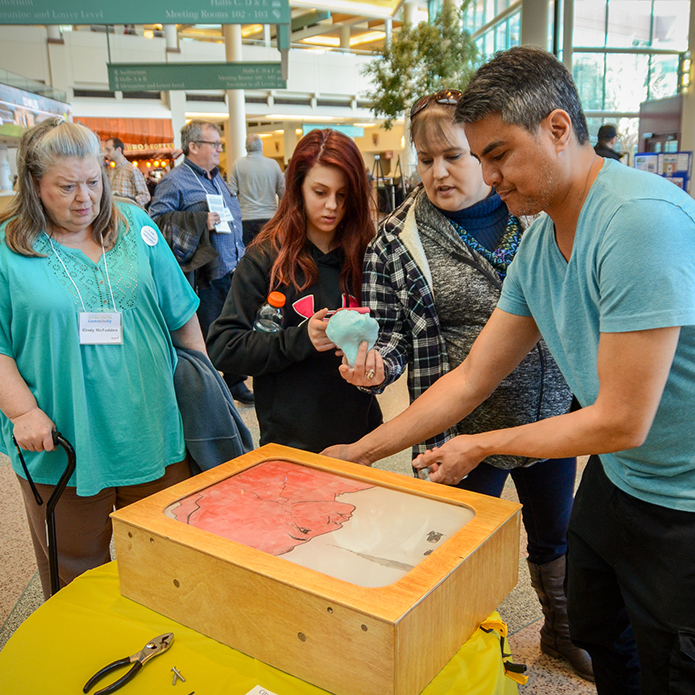
Two scrolls, called crankies, were the centerpiece of the tool in which users would cycle through to see hand-sketch images representing the history of Minneapolis, and present day conditions through the lens of racial equity. The history crankie, labeled “Our Past”, depicts Native Americans, the history of colonization of tribal lands, and social struggles of disenfranchised communities over time due to discriminatory policies and structures of oppression which has resulted in racial disparities. The second crankie, called “Our Present”, frames this narrative in contemporary issues that communities face such as the lack of affordable housing, homelessness, and displacement.
After participants navigated through the crankies they were invited to share ideas about what the city should be doing to address these disparities, and what do these outcomes look like in the year 2040. Participants provided their feedback by creating their own crankie on a long sheet of paper through drawings and text, or by writing down their comment or idea on a piece of paper. Crankies created by participants were electronically scanned, and the author kept the paper copy.
What did we hear? - Phase 3A
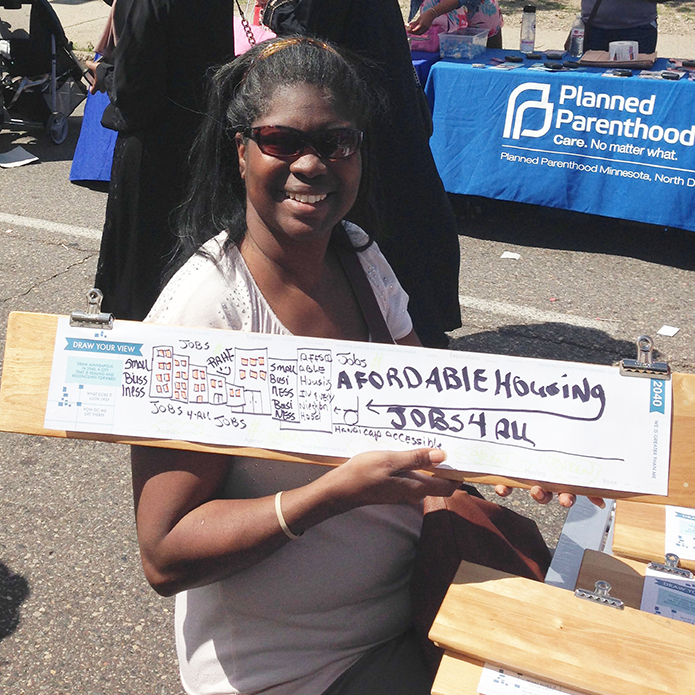
Engagement feedback collected throughout Phase 3A was transcribed and organized under the 14 overarching comprehensive plan goals. Staff heard a range of comments about housing, and feedback related to the comprehensive plan goals. Much of the feedback shared a range of people’s experience around access, affordability, and options on various topics around housing, jobs, transportation, and health. Below is a summary representing a range of themes that were heard, but it does not reflect all the comments collected.
Comments shared include people experiencing discrimination in accessing and tenanting rental properties, and the lack of accountability by landlords to maintain their properties. Others talk about having limited options of where to live due to the lack of affordable housing in neighborhoods throughout the city. Families also shared their experience of not having enough housing options that will be able to accommodate their family due to their diverse multi-generational household that are based on their cultural preference, and sentiments of fear due to gentrification and displacement that occurs with rising housing costs and development.
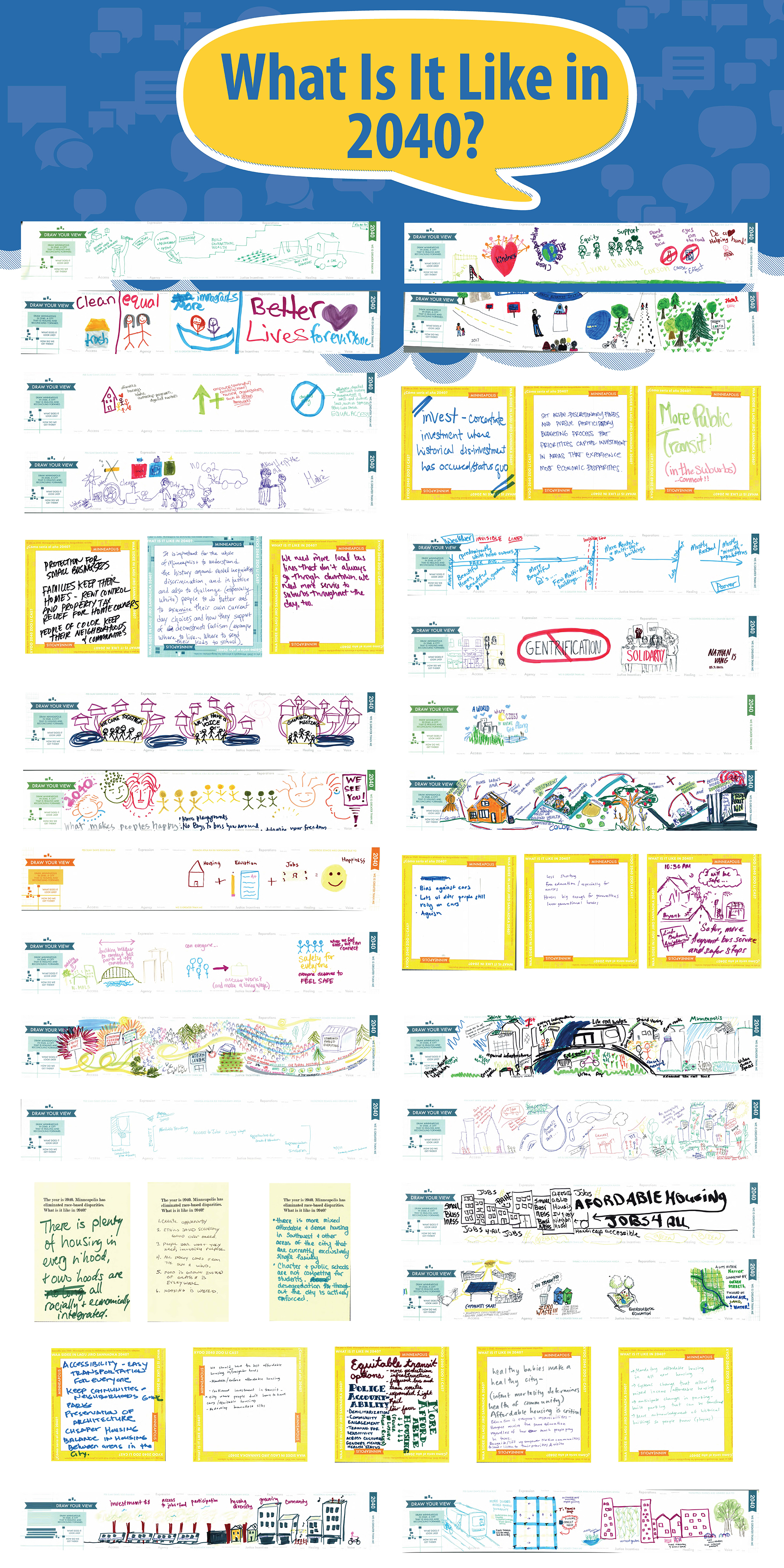
Comments around jobs and retail identified investments that are needed to address the lack of options and resources necessary to support small businesses, prepare residents for living-wage jobs, and enable access to retail, goods, and services where people live.
Another theme among comments was related to transportation and the need for more sustainable modes of travel. Walking, biking, and public transportation are modes of travel that should be prioritized in order to ensure the safety of users, support healthy lifestyles, and protect the environment for future generations.
All the raw data collected from Phase 3A, and a summary handout of engagement activities, can be found here.
Next Steps/How was the feedback used?
City staff took the raw data and summarized the feedback into themes. Phase 3A engagement feedback was used to draft policy statements, and develop policy language in order to help achieve the comprehensive plan goals.
The policy statements were then used to inform and design engagement content for Phase 3B: Policy Framework that occurred during winter 2017.

